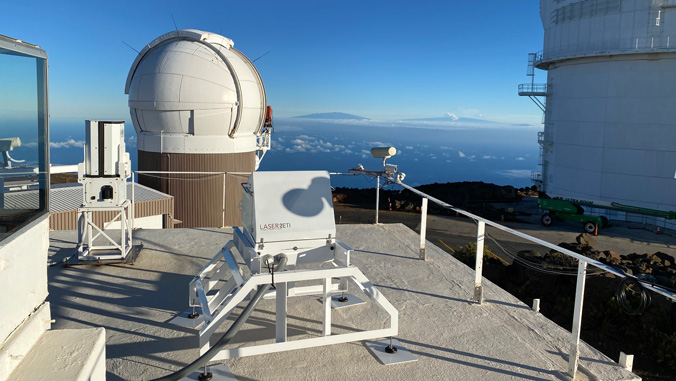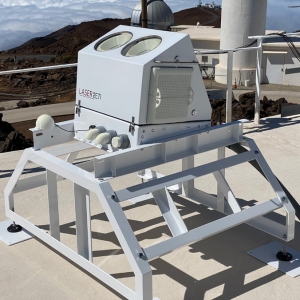
Ongoing research into the potential for finding alien life has acquired a powerful boost atop the summit of Haleakalā. The SETI Institute recently completed the installation of two LaserSETI instruments on the rooftops of an existing building on Haleakalā, which will widen the field-of-view for astronomers, enabling them to monitor a larger encompassing area of the sky. The University of Hawaiʻi Institute for Astronomy (IfA) operates and oversees observatories atop Maui’s famed mauna, including some of the world’s leading astronomical research facilities.

“The possibility that life exists elsewhere is exciting for the public, especially with the reports of biologically interesting molecules in the atmosphere of Venus, the selection of two Venus missions by NASA, the Mars Perseverance rover mission, and the upcoming Europa Clipper mission to explore Jupiter’s moon,” said IfA Professor Karen Meech. “UH has had a long involvement in astrobiology to explore the possibility of life elsewhere—both through research related to formation of habitable worlds, discovery of exoplanets, and the development of new innovative mirror and telescope technology to detect planets. It is exciting to add a new direction to this investigation by searching for technological signatures.”
The instruments are part of SETI’s groundbreaking astronomy program, LaserSETI, designed to detect potential laser pulses originating from outside the solar system. Each LaserSETI device consists of two identical cameras rotated 90 degrees to one another along the viewing axis. They work by using a transmission grating to split light sources up into spectra, then read the camera out more than a thousand times per second.
This summer, the SETI Institute began installations at Haleakalā. Observations are activated and data collection is underway. The devices were ready in September 2020 however delays due to the COVID-19 pandemic prevented LaserSETI staff from being onsite. The SETI Institute has credited IfA astronomers and engineers for critical assistance throughout the setup process.
Expanding hunt for potential life

The first two LaserSETI instruments were installed at the Robert Ferguson Observatory in Sonoma, California. On Maui, the new cameras will be aimed east, while the California devices are aimed west. The two observatories will provide simultaneous coverage of the sky over the Pacific, which is particularly important to demonstrating a potential signal’s origin isn’t merely a laser altimeter from a satellite or airplane passing overhead.
“LaserSETI is attempting a big step forward in searching for technosignatures, that is, evidence of life originating beyond Earth,” said Eliot Gillum, principal investigator for LaserSETI. “It’s the first project in either optical or radio astronomy designed to cover the entire sky.”
Traditionally, optical SETI projects have relied on photomultiplier tubes to detect laser flashes, essentially making them one-pixel cameras and enabling only a small part of the sky to be observed. LaserSETI uses two cameras with commercial lenses that image approximately 75 degrees of the sky. While stars will produce a complete spectrum from blue to red, a laser will only show up at its characteristic wavelength. Because the devices are wide-angle, it’s possible to cover the entire night sky with a relatively small number of them, thereby keeping costs down.
Damage resulting from shipping prevented the instruments from becoming operational in August, when they were installed. Repairs were made in September by IfA staff and October by the SETI Institute to bring them online. In 2022, LaserSETI will replace two of the four cameras on Haleakalā to bring the system to full functionality.

